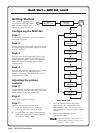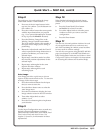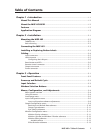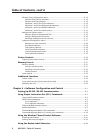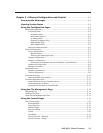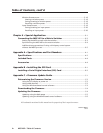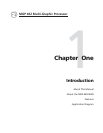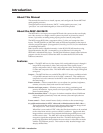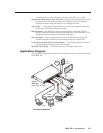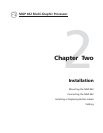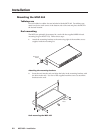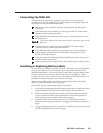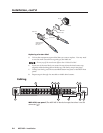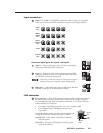
Introduction, cont’d
MGP 462 • Introduction1-2
Introduction
About This Manual
This manual discusses how to install, operate, and configure the Extron MGP 462
multi-graphic processor.
Throughout this manual, the terms “MGP,” “multi-graphic processor,” and
“processor” are used interchangeably to refer to the same product.
About the MGP 462/462D
The MGP 462 is a six-input, one-output RGB and video processor that can display
two video sources on a single screen in picture-in-picture or picture-by-picture
format. It provides switching among inputs, picture controls, and presets.
The MGP accepts RGB video, component video, S-video, and composite video
inputs. The MGP 462D is an MGP 462 with an SDI board installed so that input 6
can also accept SDI signals. (See appendix B, Installing the SDI Card, for information
on installing this board.)
Both versions can be controlled remotely via the RS-232/RS-422 interface using
Special Instruction Set (SIS
™
) commands or via an Ethernet LAN using the
MGP 462’s embedded Web pages. The MGP 462 Windows
®
-based control software
program can also be used to control the MGP via either the RS-232/422 or the
Ethernet connection.
Features
Inputs — The MGP 462 has six video inputs: fully configurable inputs 1 through 4
accept RGB, component, S-video, and composite video signals; input 5
accepts component video, S-video, and composite video; and input 6 accepts
S-video and composite video. The MGP 462D model also accepts SDI signals
on input 6.
Output — The MGP 462 has one scaled RGB or HD YUV output, available on both
a 15-pin HD connector and a set of five BNC connectors. This enables two
output devices to be connected to the MGP at the same time (both displaying
the same image).
Picture controls — Picture controls allow you to adjust size, position, brightness,
contrast, color, tint, detail, and zoom for each window.
Window and input presets — Window presets save sizing, positioning, and
priority information. Input presets save input signal type information and
picture control settings.
Window transition effects — Six types of window transition effects (22 different
effects altogether) seamlessly mute and unmute (close and open) the two
windows.
Freeze control — Freeze control freezes (locks) a window to the current image.
3:2 pulldown detection for NTSC video and 2:2 film detection for PAL video —
These advanced film mode processing features help maximize image detail
and sharpness for video sources that originated from film.
When film is converted to NTSC video, the film frame rate has to be matched
to the video frame rate in a process called 3:2 pulldown. Jaggies and other
image artifacts can result if conventional deinterlacing techniques are used
on film-source video. The MGP 462’s advanced film mode processing
recognizes signals that originated from film. The MGP then applies video
processing algorithms that optimize the conversion of video that was made
with the 3:2 pulldown process. This results in richly detailed images with
sharply defined lines.



